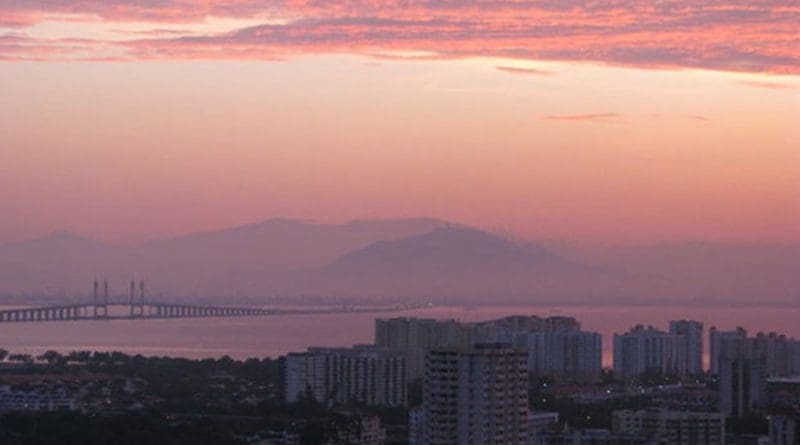The Malaysian Model – OpEd
Prime Minister Imran Khan paid his visit to Malaysia later the last month, which was concluded as successful, endorsed by the Prime Minister of Malaysia- Mahathir Mohamad himself. The visit was planned for two days with the two prime ministers having a one-on-one meeting, followed by delegation-level talks. The visit provided an opportunity to further cement the existing friendly and cordial bilateral relations by enhancing economic, trade and commercial ties for the mutual benefit of the two countries. It has been a success in the view that it has been a way forward for the terminating of trade cooperation agreements between the two countries. At the end of the visit, the energy sector especially LNG, tourism, greater collaboration between high-tech industries in Malaysia and Pakistan, and possibility of Malaysian investment in Special Economic Zones were discussed.
Imran Khan was welcomed warmly by the Malaysian delegation on his arrival. The purpose of the visit was for Imran Khan to inspect analytically the Malaysian economic model as of how they have been successful in achieving a great economy, without the interruption of the West. Imran Khan with an intention of following the model Malaysia had adopted scheduled his visit. There is no qualm over saying that this decision is to be appreciated by the new government if they are successful in implementing in Pakistan whatever they learned in Malaysia. Malaysia by targeting on the direct social realities of their country has been able to achieve the zenith of economic and social success.
Malaysia has followed an indigenous economic model, basing their economy on purely autarky by developing products what their local conditions and society were in need indigenously rather getting the dictation from the western models of economy, without ever feeling the need of foreign assistance for their local expense decisions- the position where Pakistan lacks.
Malaysia has continued over four decades of brisk inclusive growth, declining its reliance on agriculture and commodity exports to become a diversified, contemporary and open economy. The profit of development have been extensive and the high levels of income inequity inherited at independence progressively reduced through a development model emphasizing impartial growth, including increased participation of the Bumiputera (ethnic Malays and indigenous groups) in the modern economy. Growth has been determined by a series of structural reforms and the country cultivated its complimentary geographical location on global trade routes to promote export-oriented industrialization and endorsing regional incorporation. This has facilitated the improvement of manufacturing, boosting growth, employment and yield by expanding access to global markets, capital, knowledge and technology.
Pakistan since its birth has been following the western model of economy where Pakistan does not decide what its economic needs ought to be, but the west decides what the Pakistani economy needs. This dependence on the west has lead Pakistan in having the detrimental economic situation it has today where the “Dollar” seems to be getting more expensive and the rupee, de valued, thus the economy crippling.
Socially, Malaysia stands as the only country globally that has in actuality criminalized war in their national law. The society has always been free from political turmoil since politics has been very stable for the country, unlike Pakistan.
It will be unfair if it is advised that Pakistan starts following the complete Malaysian model of economy since the politico-economic situation and history of both the countries have been very different, thus applying the exact replicated model will not be possible. Pakistan unlike Malaysia has been subject to political and economic instability, has witnessed change in policies, dealt largely with the menace of corruption, have had government that would reverse economic models of each incoming government to start anew etc. It was pointed out rightly by PM Imran Khan that if “Malaysia, with a population of 30 million people, has exports worth $220 billion, and we, with a population of 201 million people have exports worth $24bn, then clearly we are doing something wrong”.
A solution can be applied in the act that Pakistan rather relying on the West for its economic build up, shall shift its focus on countries with the similar background and a more tangible yet acceptable economic model as that of Malaysia and other Asian economic giants. Pakistan can try to learn from them and follow their economic models as a replacement of the West. Following a pattern of economic development of similar nations will be much easier to pursue, less exploitative and attainable compared to the unrealistic western models.
Pakistan should realize what their need is indigenously rather letting the west dictates it for them. The Western model has always been exploitative towards countries like Pakistan and this is the right time to abandon it and take other inspirations in view.
*Hareem Aqdas is a student of International Relations from Quaid-I-Azam University, Islamabad and a former exchange student to the U.S. for the course of Leadership and Social Justice.

